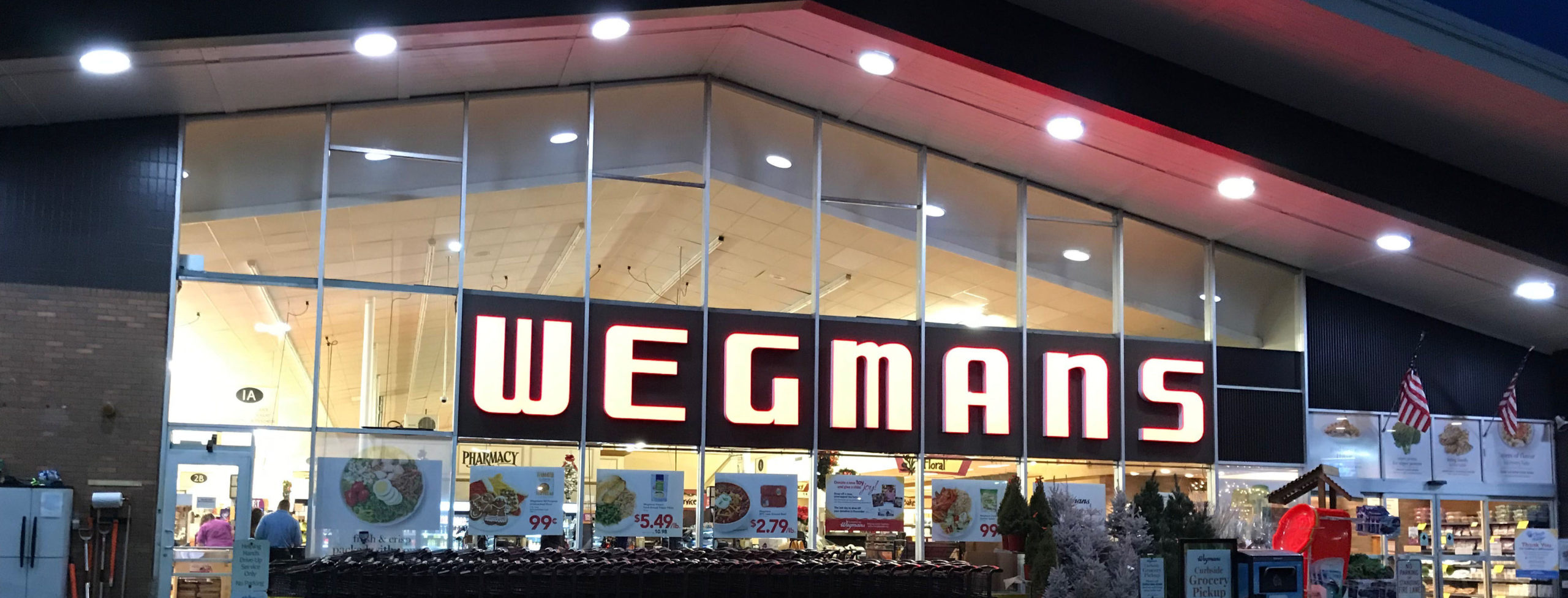Hundreds of people stood outside the store entrance Saturday morning, the first shopping day after Wegmans announced it was curtailing nighttime operations.
The scene when the doors opened was like something from the Oklahoma land rush. Customers sprinted inside, grabbed carts and hurried toward the far corner of the store, toward the toilet paper and paper towels.
Within minutes, register lines stretched from the front of the store to the back. Many shelves were soon cleaned out.
The run on groceries has become a cultural phenomenon, the empty shelves almost a tourist attraction. Shortly before closing time, a father guided his son through the aisles, pointing out picked-over sections as if they were ruins of a lost civilization.
“Look at the peanut butter!” the father exclaimed. “Gone! Look at the dog food! Gone!”
Other customers sought reassurance. “Do you think something’s going to happen?” a young woman asked me. “I’m worried. Look how worried I am, I’m asking a stranger.”
We closed at midnight, spending the next six hours cleaning and stocking shelves, replacing the Purell dispensers at each register, “reshopping” the many items picked up by customers and then deposited in the wrong place. (Perishables are thrown away; nonperishables are returned to their proper locations.)
The truck carrying the grocery delivery finally arrived before dawn on Sunday, and the night crew valiantly went to work putting out cereal, coffee, paper goods, and other products.
Supervisory staff came in early, as did more cashiers than ever worked on a Sunday morning pre-coronavirus. (No snowstorm rivals the current frenzy; the only occurrence I can think of that might measure up is the Buffalo Bills going to the Super Bowl. But even that would be a one-day event. Everyone at Wegmans, whether they’re teenagers on the register or seasoned store managers, is in new territory.)
Jitters set in as 6 a.m. approached. Cashiers turned on their register lights and took their positions like athletes awaiting the starting pistol.
The doors opened and the first shoppers ran by. Yes, ran. They wore sneakers. It was if they had checked out the store layout online and mapped their routes.
Nevertheless, Sunday was calmer than the day before. The crowd was smaller, the carts less full.
Some customers were almost apologetic about their urge to shop. Many, more than I could count, thanked us for coming to work.
I’m taking this as a good sign.
